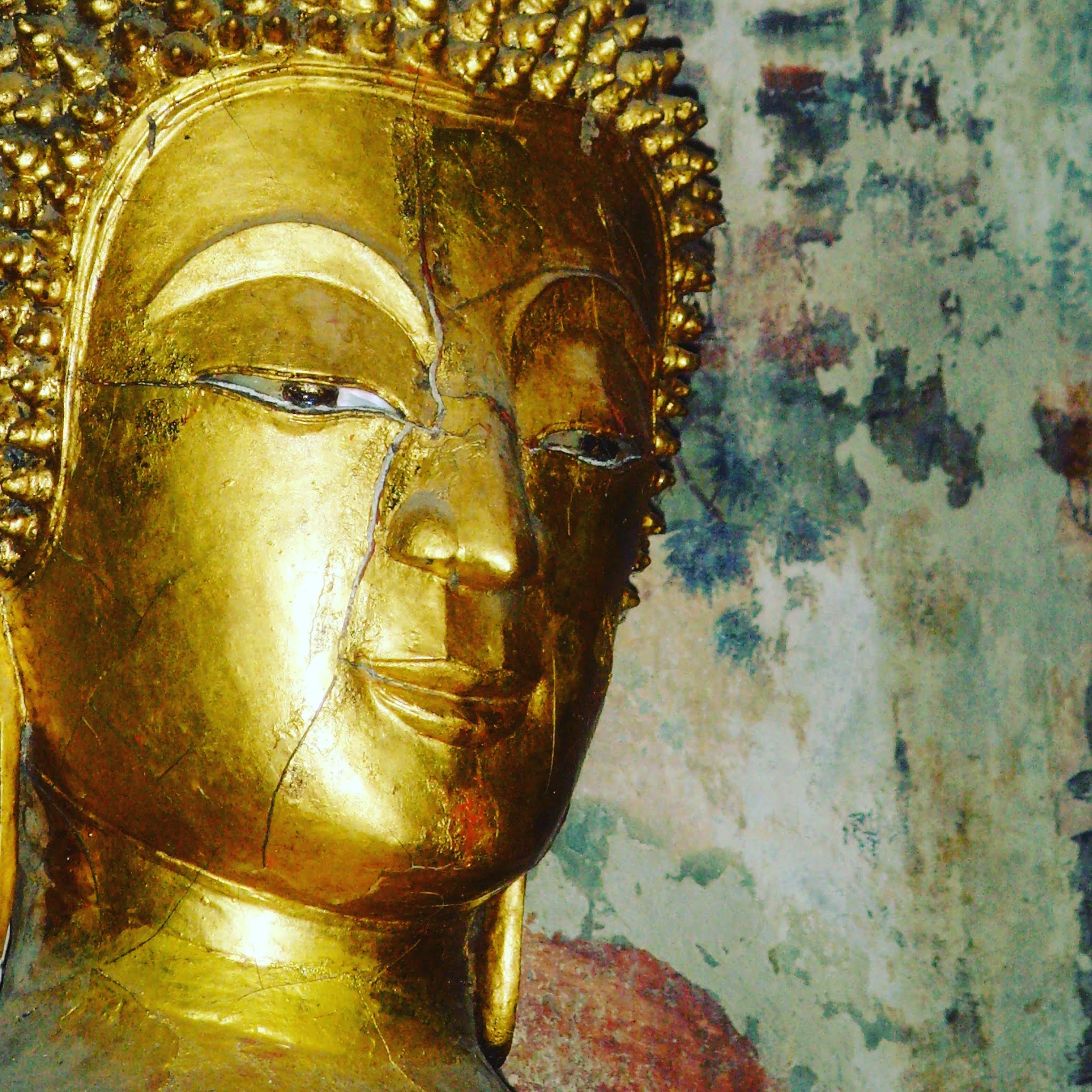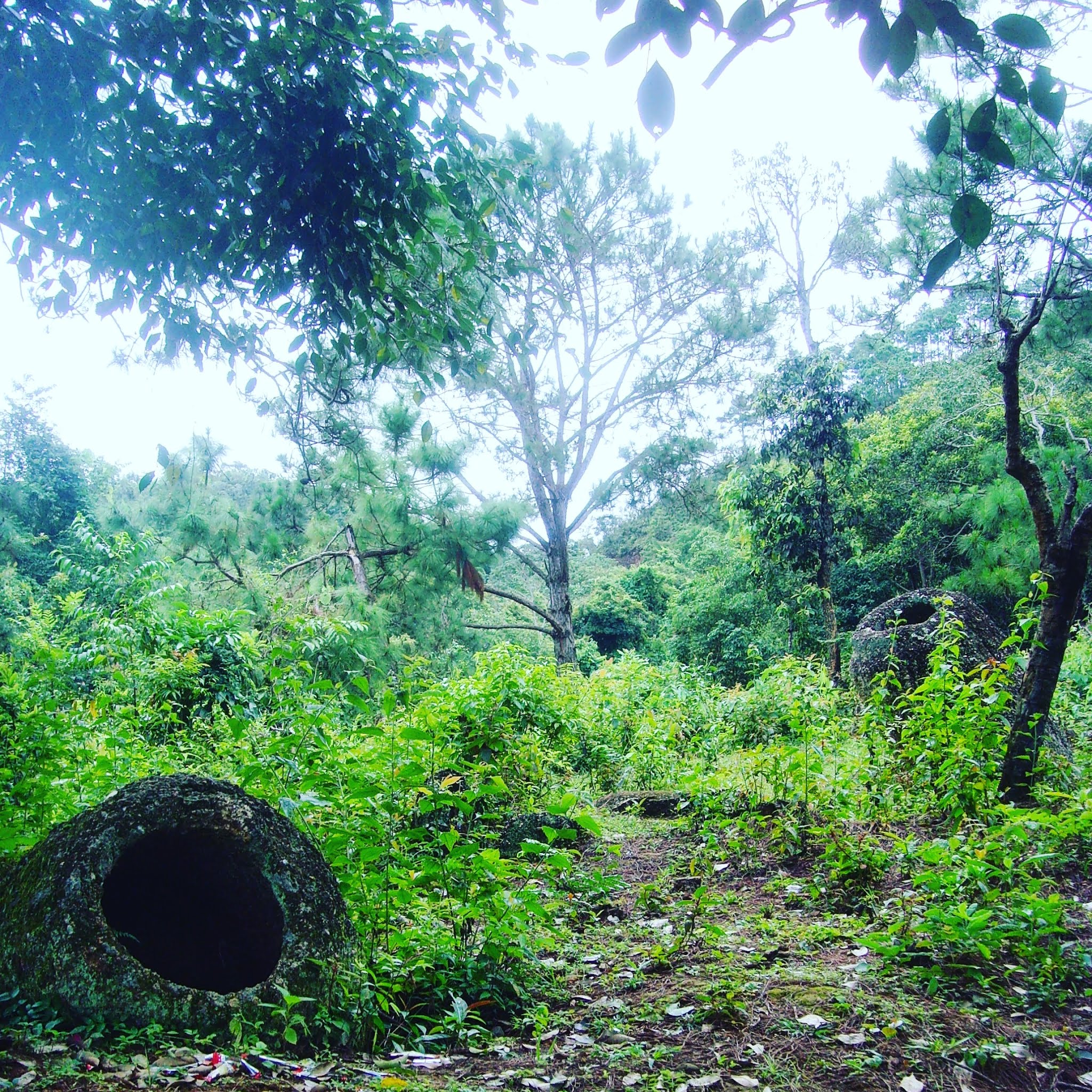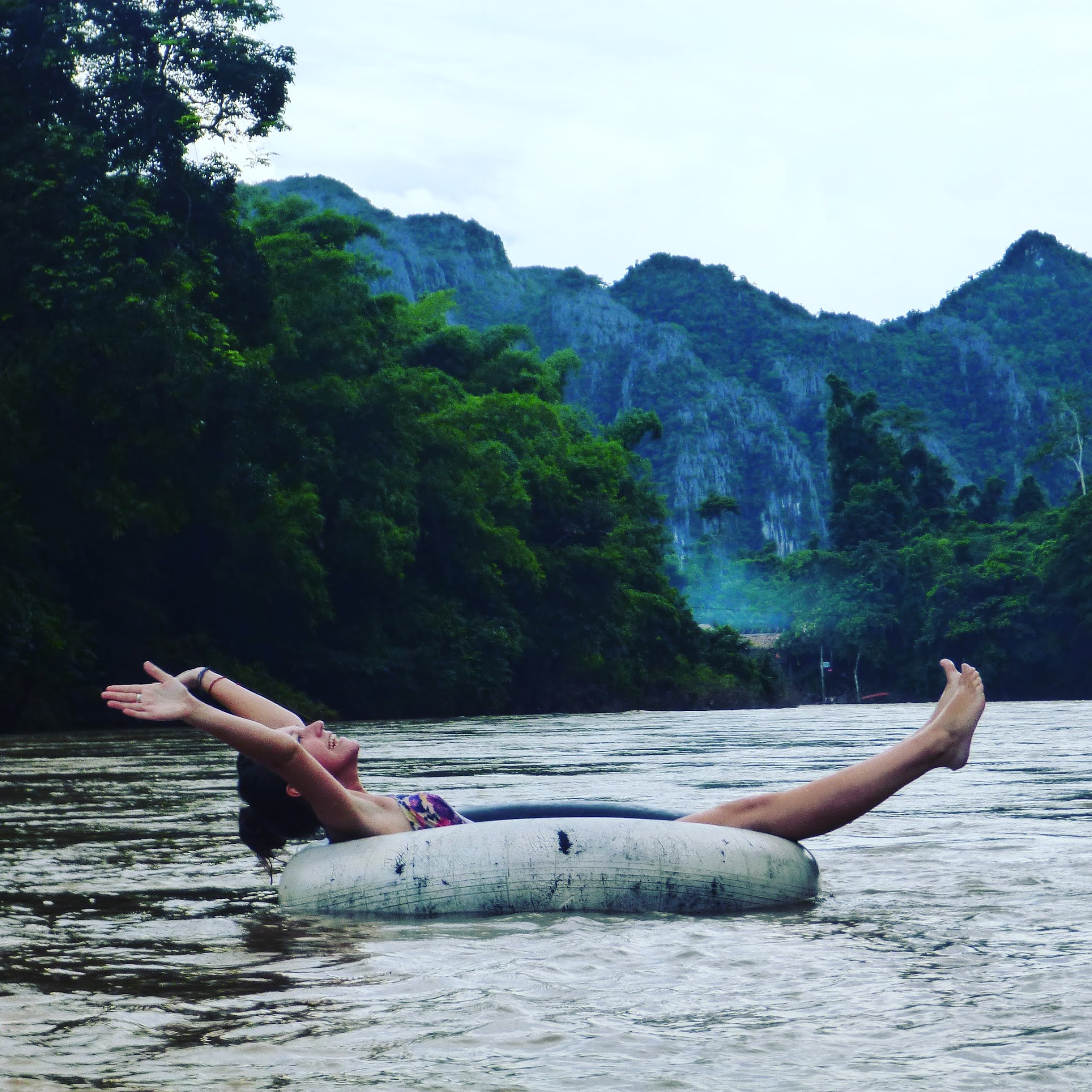Some of the most beautiful places in Laos can be explored seamlessly, even if you're traveling the world on a budget. If limited on money, overland travel rather than taking costly flights is usually the best option. During my three months in Southeast Asia, I pretty much always traveled by train, bus, and occasionally by boat, which was the case when traveling from Thailand into Laos. After taking a bus from Chiang Mai to Chiang Rai and stopping for the night in Chiang Khong, I crossed the Mekong River into Laos. It was here that I picked up my visa and passport stamps, before heading to the pier for the slow boat that winds all the way down the khaki-coloured Mekong River into the heart of Laos, eventually ending in Luang Prabang two days later. The journey is undeniably slow, but it is so much cheaper than flying and means you get to experience local life along the river, which, for me (when not restricted by time), is what traveling is really about.
 |
| Luang Prabang, one of the most beautiful places in Laos, overflows with ornate Buddha statues and pretty temples |
Whether traveling to Laos from Cambodia, Vietnam, Thailand, China, or Myanmar, travel by land or water is undoubtedly better, especially when on a budget. It's also kinder on the planet than flying, but I realise that if you’re not on a long backpacking trip, you will have to fly to Laos to start your adventure. In this case, Luang Prabang is the best airport to fly into to make the most of your time in the country.
The most beautiful places in Laos
Luang Prabang
Luang Prabang is one of my favorite towns in Laos. Full of shimmering Buddhist temples, delicious food, and French colonial architecture, it deserves at least three days of your trip. I stayed at Villa Kingkham Riverside, a simple but clean guesthouse with AC that cost $15 (£11) a night, including breakfast. The best and cheapest way to explore the town is by bicycle. I spent a day visiting some of the many Buddhist temples known as Wats and exploring the beautiful countryside surrounding town. Bicycles cost around $2 (£1.50) a day, with many guesthouses and shops offering rentals.
 |
| Young monks sit outside one of Luang Prabang's ornate wats |
One of the best meals I had in Luang Prabang was by the river in a restaurant called Tamarind. Specialising in Lao cuisine, I tried two ‘taster plates’, one included sticky rice accompanied by ‘jeows’ or dips of smoky aubergine and spicy, sweet-chilli paste, while the other had dried buffalo meat that resembled beef jerky, both were amazing. The plates also came with sheets of dried river algae (known as kaipen) from the Mekong. The algae is mixed with herbs and spices before being pressed, dried, and scattered with sesame seeds, then fried. They also serve a very delightful Jujube (a red date-type fruit) and coconut drink.
Each evening, stalls are set up along the wide streets of Sisavangvong Road as part of the night market. Selling everything from hand-stitched books, reclaimed jewellery, and silk to tasty, affordable street food, don’t miss the fresh spring rolls.
Phonsavan and the Plain of Jars
Stopping off point for visiting the mysterious Plain of Jars, the cheapest way to get to Phonsavan is by taking a local bus from Luang Prabang through lush, leafy countryside, up and down mountains and past long, curly-horned water buffalos. The countryside isn't too dissimilar to Vietnam's Sapa , and the journey takes around eight and a half hours—you can simply turn up at the bus station on the day of travel, buying your ticket just before the bus leaves. |
| Passing water buffalo on the way to Phonsavan |
The Plain of Jars (much like the ancient taulas of Menorca) is an incredible place where a series of eerie sites are strewn with varying sizes of stone and jar-shaped containers. There are thousands of jars spread throughout the landscape, with the biggest measuring around three meters and weighing a tonne. Over 2000 years old, these mostly limestone jars would have been carved by hand, and incredibly, to this day, no one is clear on their purpose. Many theories have been presented around the usage, with some saying they were used to hold rainwater or rice wine, while others have speculated about them being tombs for human remains.
 |
| The Plain of Jars, one of the most beautiful places in Laos |
Even more eerie is the fact that 80 million unexploded cluster bombs are dotted throughout the jar sites and across the countryside in this area of Laos. Dropped by the US Air Force during the Secret War, less than 50 years ago, these unexploded bombs have had a lasting impact on the country. As well as making research into the Plain of Jars almost impossible, people are unable to make money by farming their land here, and hundreds of people, including children, are killed and injured each year when hidden bombs explode. As part of a tour of the Plain of Jars, you can visit the UXO Centre, run by the British organisation MAG (Mines Advisory Group). The centre is super informative with short documentaries and factual information, enabling visitors to learn more about the sad legacy of these unexploded bombs in Laos.
 |
| The purpose of the jars is still unknown, to this day |
For my time in Phonsavan, I stayed at the White Orchid Guest House, which is basic but spotless and only $8 (£7) a night, including breakfast. I also booked a guided tour of the Plain of Jars through the hotel, costing $5 (£4), which included a tour of two jar sites, a look at the old city and a weaving village, plus time in the UXO centre.
Vang Vieng
From Phonsavan, I took another local bus to the charming riverside town of Vang Vieng, often advertised as the go-to destination for tubing. Tubing involves floating down a river in a blown-up tractor tire inner tube. The bus ride took a little over five hours and, once again, cost a couple of dollars. I set up base at the Grand View Guesthouse, a slightly shabby place that was not as good a value as other accommodations I had in Laos, but it proved adequate for a few nights. Today, Vang Vieng is a much tamer party town than it once was. When I visited, the hedonistic tubing experience was in full swing, serving as the primary reason for coming to this once-sleepy town. Back when I visited, there were ‘death slides’ made from bathroom tiles, enormous swings that catapulted thrill-seekers into the depths of the river, free shots of unknown alcohol dispensed from glass bottles containing preserved cobras, and countless stories of ‘pink-eye,’ an infection contracted from dirty river water. |
| Tubing in Vang Vieng |
Tubing is still possible today, and a few bars along the river remain, but gone are the death-trap slides and swings, which can only be a good thing. Floating down the river for hours in the afternoon light is a beautiful experience and one I’m glad I did. It’s also relatively cheap to hire a tube in town, around $6 (£5), plus a deposit that’s returned if you make it back before 6pm (you probably won’t!), the cost also includes a Tuk-Tuk ride that takes you along the banks of the river to the start point.
There’s so much to see and do in Laos, and amazingly, it’s all possible on a fairly tight budget, but remember to leave a tip where possible—what seems like small change can make a huge difference.
Post a Comment